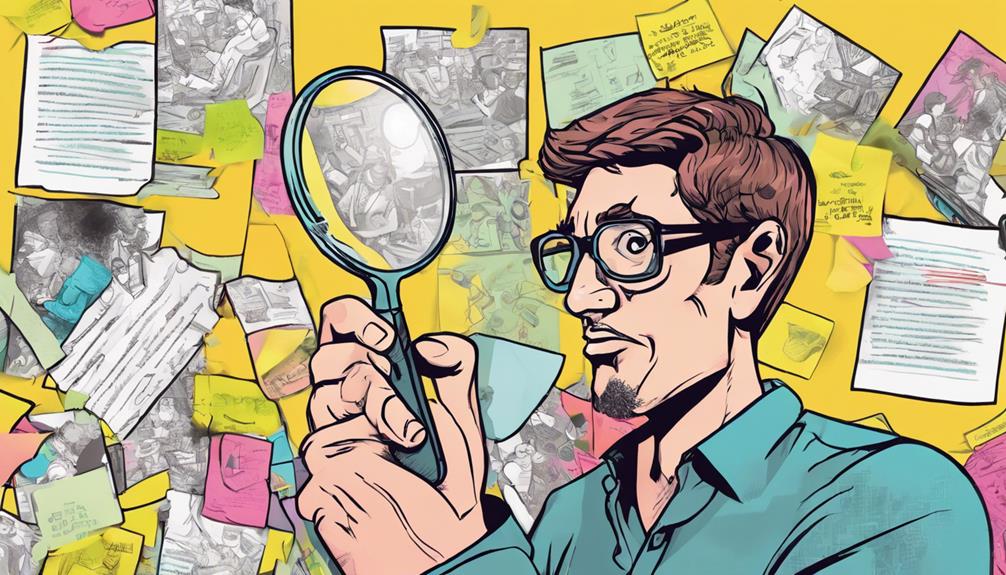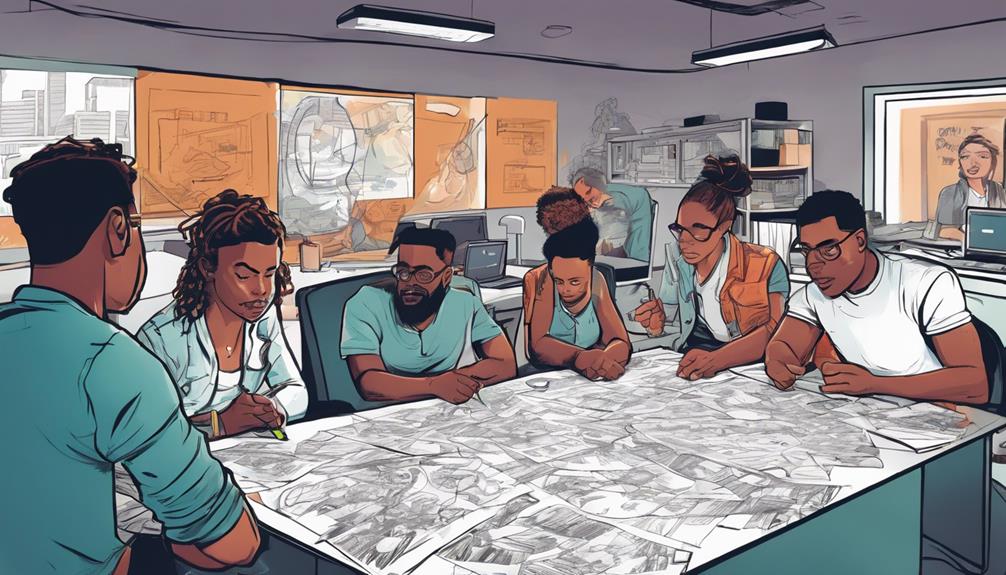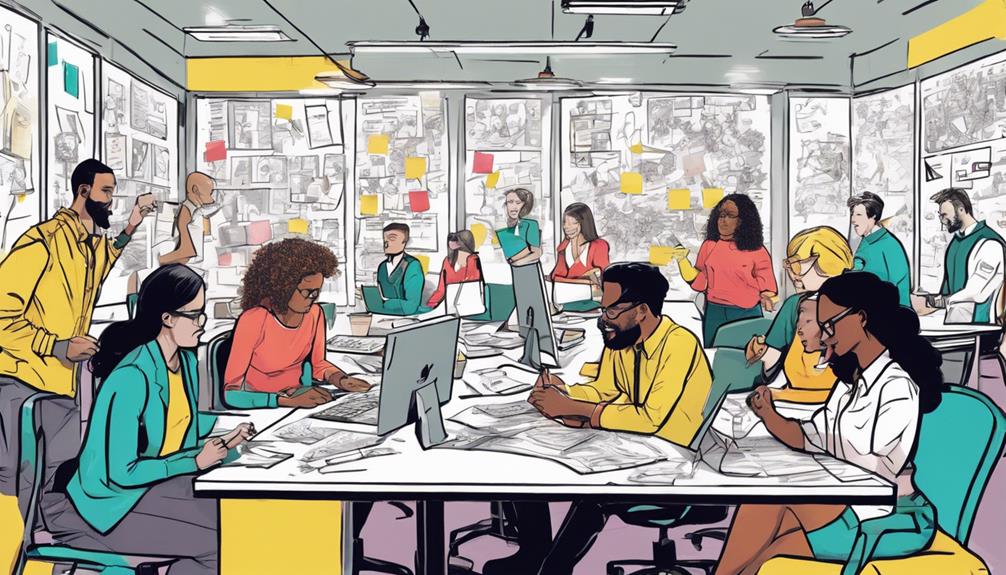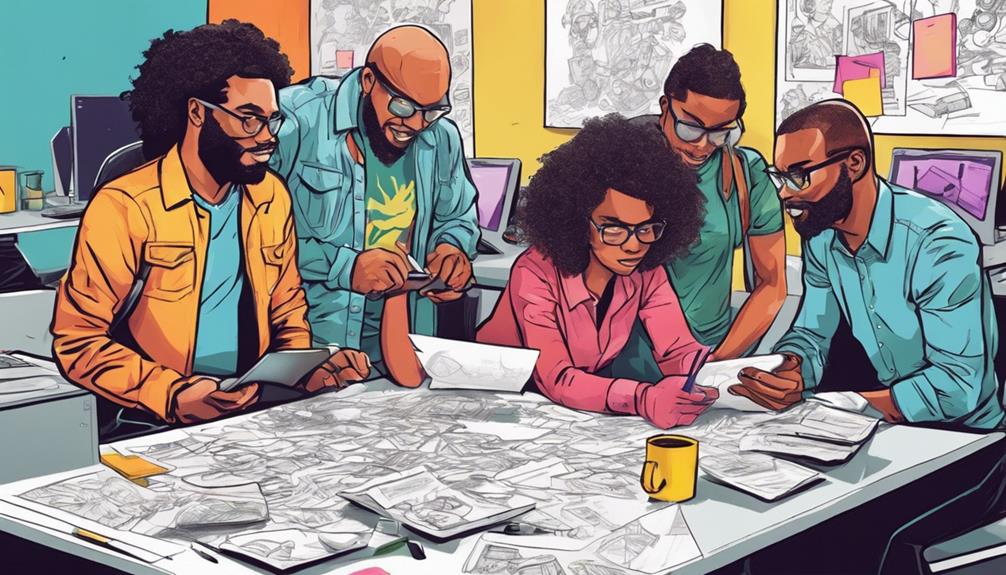In Bill Burnett's TED Talk, embracing imperfection for progress is not discussed as a mindset of design thinking. The focus is more on learning from failure, iterating for innovation, fostering experimentation, overcoming setbacks with resilience, and viewing failure as feedback for improvement. If you want to discover more about the design thinking mindsets explored in the talk, you may find the other areas worth exploring.
Key Takeaways
- Fixed Mindset is not discussed in Bill Burnett's TED Talk.
- Limiting beliefs hinder growth in design thinking.
- Fixed Mindset opposes the idea of learning from failures.
- Emphasizing perfection over progress contradicts design thinking principles.
- Fixed Mindset discourages experimentation and adaptation.
Embracing Failure as a Learning Opportunity
Embrace failure as a valuable learning opportunity in the design thinking process. Bill Burnett, a prominent figure in the field, stresses the significance of embracing failure as a natural part of innovation and progress.
In the design thinking process, failure isn't viewed as a setback but rather as a stepping stone towards success. By learning from failures, designers gain new insights and develop creative solutions that they wouldn't have discovered otherwise.
Embracing failure allows designers to iterate on their ideas, continually improving them until they reach successful outcomes. It's through these failed attempts that designers refine their designs, making them more innovative and effective.
In the journey of design thinking, failure isn't to be feared but embraced as a necessary part of the process that ultimately leads to growth and success. So, don't be discouraged by failures; instead, see them as opportunities to learn and evolve in your design journey.
Iterating for Innovation and Growth
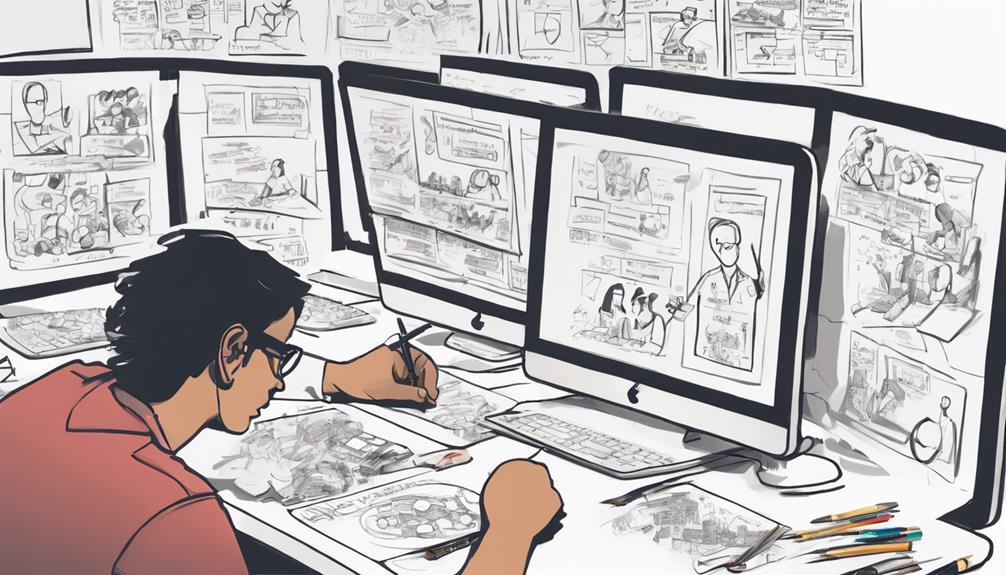
In the design thinking process, iterating for innovation and growth involves continuously refining and improving ideas to drive progress and uncover new solutions and opportunities for growth. This iterative approach is fundamental to achieving success in design thinking, as highlighted by Bill Burnett in his TED Talk.
Here are three key aspects of iterating for innovation and growth:
- Testing and Iterating: By testing different possibilities and continuously iterating on designs, you can refine and enhance your ideas to make sure they meet the desired objectives and user needs.
- Learning from Failures: Embracing failures as learning opportunities is essential during the iterative process. Each setback provides valuable insights that can guide improvements and lead to innovative solutions.
- Opportunities for Growth: Through iteration, designers not only refine their current ideas but also uncover new opportunities for growth and innovation, allowing for the development of groundbreaking solutions that meet evolving market demands.
Fostering a Culture of Experimentation

Encouraging a culture of experimentation within a design team can lead to innovative solutions and continuous improvement in problem-solving approaches. While Bill Burnett's TED talk on design thinking may not have explicitly highlighted experimentation as a mindset, it remains a fundamental aspect of the design thinking process. Experimentation allows teams to test hypotheses, learn from failures, and iterate towards better solutions. In fostering a culture of experimentation, teams embrace a mindset that values learning through trial and error, pushing boundaries, and thinking outside the box.
To explore further into the significance of experimentation in design thinking, consider the following comparison:
| Experimentation in Design Thinking | Emphasized in TED Talk? |
|---|---|
| Encourages testing ideas through trials and tests | Not explicitly highlighted |
| Promotes a learning-oriented approach to problem-solving | Potentially overshadowed by other mindsets |
| Encourages creativity and innovation through iterative processes | May not have been the primary focus |
While the TED talk may not have extensively discussed experimentation, recognizing its importance can enhance your understanding of design thinking principles.
Navigating Through Setbacks With Resilience
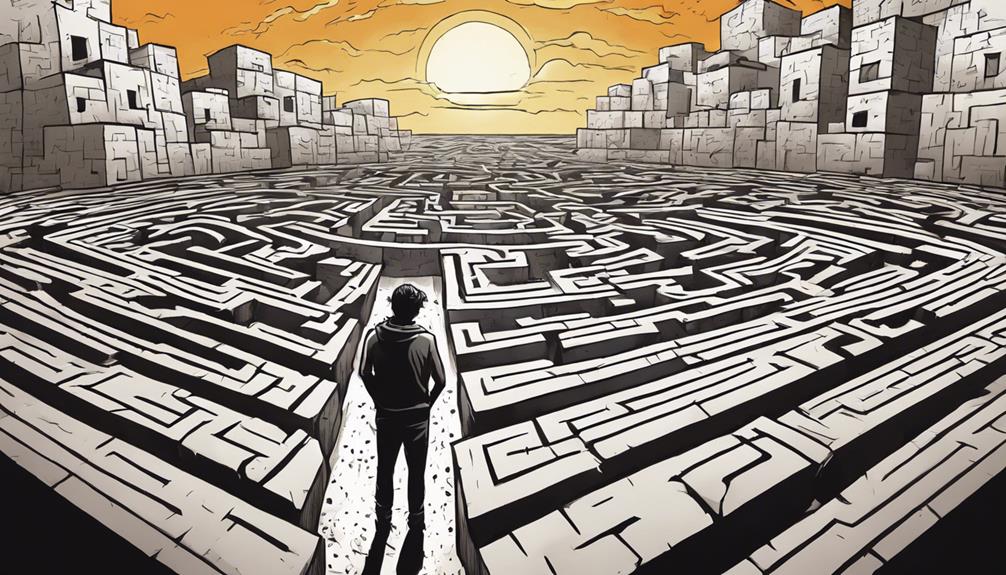
When faced with setbacks, remember that resilience is your greatest asset.
Embrace challenges as opportunities to grow and learn, strengthening your inner resolve.
Resilience in Adversity
Moving through setbacks with resilience requires a mindset focused on bouncing back from challenges in the design thinking process. Resilience in adversity is vital for designers as they encounter various obstacles along the way.
Here are three key aspects to contemplate regarding resilience in facing setbacks and challenges:
- Adapting to Change: Resilience involves being flexible and adaptable when unexpected circumstances arise, allowing you to adjust your approach and continue moving forward despite setbacks.
- Maintaining a Positive Outlook: Keeping a positive mindset can help you see setbacks as opportunities for growth rather than insurmountable obstacles, enabling you to approach challenges with optimism and determination.
- Seeking Support: Building a network of support, whether through colleagues, mentors, or friends, can provide you with the encouragement and guidance needed to navigate through tough times and emerge stronger on the other side.
Overcoming Challenges Positively
Moving through obstacles with resilience in the design thinking process involves reframing challenges as opportunities for growth and learning. Embracing a growth mindset allows you to view obstacles as stepping stones towards progress rather than insurmountable barriers. Resilience plays a pivotal role in bouncing back from failures and setbacks, enabling you to persist in the face of adversity. By cultivating a positive mindset towards challenges, you open yourself up to finding creative solutions and innovative approaches to problem-solving.
Approaching setbacks with a proactive and solution-oriented mindset not only helps in overcoming immediate obstacles but also contributes to long-term success in the design process. Remember, setbacks are an inherent part of any creative endeavor, and how you choose to respond to them can greatly impact the outcomes.
Building Inner Strength
To navigate through setbacks with resilience in design thinking, fostering inner strength is essential for overcoming challenges effectively. While not explicitly highlighted in Bill Burnett's TED Talk, building inner strength is an essential component when facing obstacles in the design process.
Here's how you can enhance your inner strength to navigate setbacks:
- Develop Emotional Intelligence: Understanding your emotions and how to manage them can help you stay resilient in the face of setbacks. By being aware of your feelings and reactions, you can respond more effectively to challenges.
- Cultivate a Growth Mindset: Embracing a mindset that sees setbacks as opportunities for growth can bolster your inner strength. Viewing challenges as learning experiences rather than failures can help you bounce back stronger.
- Practice Self-Compassion: Being kind to yourself during tough times can build resilience. Acknowledging your efforts, even when things don't go as planned, can help you maintain a positive outlook and persevere through setbacks.
Viewing Failure as Feedback for Improvement
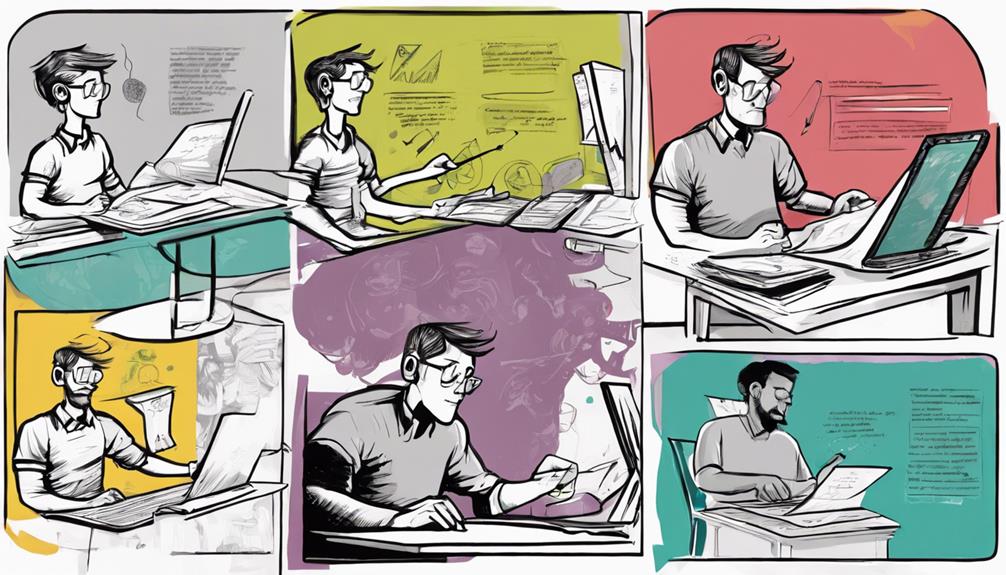
Embracing failure as feedback is pivotal in cultivating a growth mindset within the design thinking process. Failure isn't viewed as a setback but rather as a stepping stone towards improvement.
In the iterative design process, each failure provides valuable insights that guide designers towards better solutions. By embracing failure, designers can adjust their approach, learn from their mistakes, and iterate towards more innovative outcomes.
It's through these setbacks that innovation flourishes, as each failure offers a chance for improvement and growth. Failure is reframed as a necessary part of the journey towards success, encouraging continuous learning and progress.
Viewing failure as feedback transforms it from a negative experience to a constructive tool for development. In design thinking, the ability to embrace failure as a source of valuable information is what sets apart successful innovation from stagnation.
Embracing Imperfection for Progress
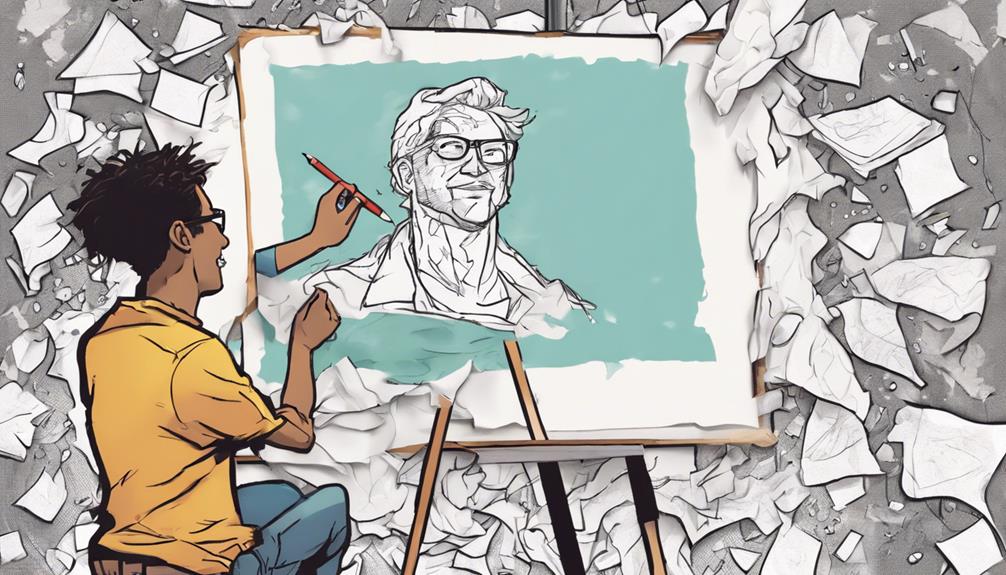
Accepting imperfection as a natural part of the design thinking process enables progress and fosters growth and innovation. Embracing imperfection is key to advancing in life design and embracing the iterative nature of the design thinking approach.
Here are three essential aspects related to this mindset:
- Progress over Perfection: Prioritizing progress allows you to move forward and iterate on your ideas continuously. In design thinking, the focus is on making strides rather than achieving flawless outcomes.
- Bias Towards Action: Embracing imperfection aligns with the design thinking principle of having a bias towards action. By taking small steps and testing ideas quickly, you can make progress and learn from your experiences.
- Fostering Innovation: Imperfection opens the door to innovation by encouraging experimentation and exploration. By accepting imperfections as part of the process, you create room for creativity and novel solutions to emerge.
Cultivating a Growth Mindset Through Failure

To cultivate a growth mindset through failure, you must embrace setbacks as opportunities for learning and development.
By viewing failure as a chance to iterate and improve your designs, you can foster resilience and perseverance.
Embracing Failure for Growth
Failure in design thinking isn't just a stumbling block but a stepping stone towards growth and innovation. Embracing failure for growth is a fundamental aspect of the design thinking process, as highlighted by Bill Burnett in his TED talk.
Here's how embracing failure can lead to growth and innovation:
- Iterative Improvement: Viewing failure as an opportunity for iteration allows designers to refine their ideas continuously, leading to more innovative solutions.
- Resilience and Risk-Taking: Embracing failure fosters resilience, enabling individuals to bounce back stronger from setbacks and encouraging them to take calculated risks in their design endeavors.
- Learning and Advancement: Rather than seeing failure as a setback, embracing it for growth promotes a culture of learning and advancement in the design journey, pushing designers to explore new possibilities and push boundaries in their work.
Learning From Setbacks
Developing a growth mindset in design thinking involves learning from setbacks to foster innovation and progress. Embracing failure as a learning opportunity is a core aspect of this mindset.
When setbacks occur, viewing them as stepping stones towards improvement and innovation is essential for growth. Failure shouldn't be feared but rather embraced as a natural part of the design process.
By understanding that setbacks provide valuable lessons and insights, individuals can adapt and enhance their designs effectively. Cultivating resilience through setbacks allows for continuous learning and adaptation in the face of challenges.
In design thinking, setbacks aren't roadblocks but opportunities for growth and development. Approaching failures with a growth mindset enables individuals to navigate challenges with confidence and creativity.
Frequently Asked Questions
What Are the 7 Mindsets of Design Thinking?
To understand the 7 mindsets of design thinking, explore concepts like curiosity, reframing, bias towards action, mindfulness of the process, and radical collaboration. Embrace these mindsets to tackle problems creatively and find innovative solutions.
What Is the Mindset of Design Thinking?
Approach design thinking with curiosity, reframing challenges, bias towards action, and radical collaboration. Embrace creativity, innovation, and teamwork to tackle problems effectively. These mindsets foster exploration, new perspectives, progress, and success in design endeavors.
Is Design Thinking a True Mindset?
Design thinking is indeed a true mindset. It's about reframing challenges, embracing collaboration, bias towards action, and cultivating curiosity. Bill Burnett's TED talk emphasizes these key principles for innovative problem-solving. So, yes, it is a true mindset.
What Mindsets and Dispositions Do You Need to Be a Great Design Thinker?
To be a great design thinker, you need a curious mindset, a bias towards action, a spirit of radical collaboration, and mindfulness in the design process. Embrace diverse perspectives, take steps, and trust iteration for innovation.
Conclusion
So, now that you know the key mindsets of design thinking discussed in Bill Burnett's TED talk, remember to steer clear of embracing failure as a learning opportunity.
After all, who needs growth and innovation when you can just stick to the status quo and avoid any potential setbacks or challenges?
Embrace your fear of failure and watch as your creativity and progress come to a screeching halt.
Happy stagnating!
